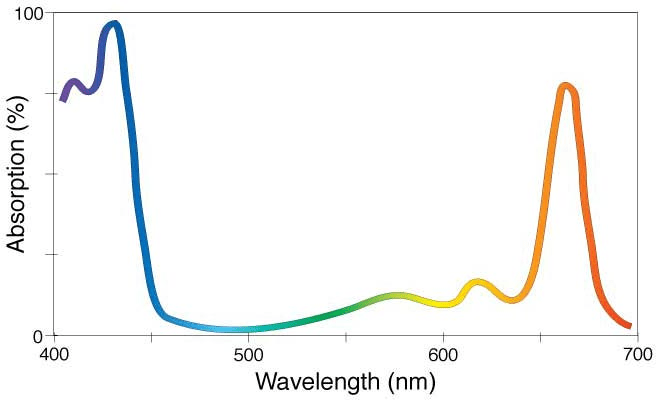May 15 2021
Light Spectrum
Microalgae Growth – Light Spectrum
Microalgae need light to grow and photosynthesize, but not all light is created equal. The spectrum of light can have a big impact on how well your algae grows.
The spectrum of a light is how bright it is at different wavelengths. This can be closely related to colour, e.g. a red LED looks red because it is emitting light with a wavelength of 650 nm. However, differences in light spectra can also be hard to distinguish with the human eye. For example in the figure below (Fig 1) I’ve plotted three different “white” light sources: the sun, a fluorescent bulb, and a cool white LED. As you can see, they have pretty distinct spectral profiles.

Why does this matter for microalgae? Well, all algae use the pigment chlorophyll a to carry out the reaction of photosynthesis. And as you can see from the profile of chlorophyll a absorbance (Fig 2) it is particularly good at absorbing light in the red and blue parts of the spectrum. This is why so many grow lights (including our PBR panels!) tend to have lots of red and blue light.

In reality, all microalgae have other pigments in addition to chlorophyll a. Most of these pigments broaden the absorption spectrum beyond the peaks of chlorophyll a in the red and blue (Fig 3). The specific pigment complement a species has depends on which branch of the evolutionary tree it comes from.

The absorption spectra in Figure 3 were measured for the same algae as in the flasks in the image above. Can you see how the absorption spectra relate to the colour of the algae? The colours of light that are not well absorbed are reflected so that we can see them – green for Tetraselmis, reddish for Rhodomonas and yellowish brown for both Chaetoceros and Tisochrysis.
So what to consider when choosing lights for algae growth?
- White – sunlight has a broad spectrum, so white light can work for all species. Note that different “white” light sources may have different spectra, and few replicate the broad output of natural sunlight.
- Red and blue – these colours are strongly absorbed by all microalgae and tend to yield the fastest growth rates for most species.
- Other colours – may be absorbed well or poorly depending on the species. Can be very important for specific applications e.g. production of specific pigments.
For more information about how light spectrum affects algae growth check out the “Managing Spectral Distribution” section of Ooms et al. (2016).
